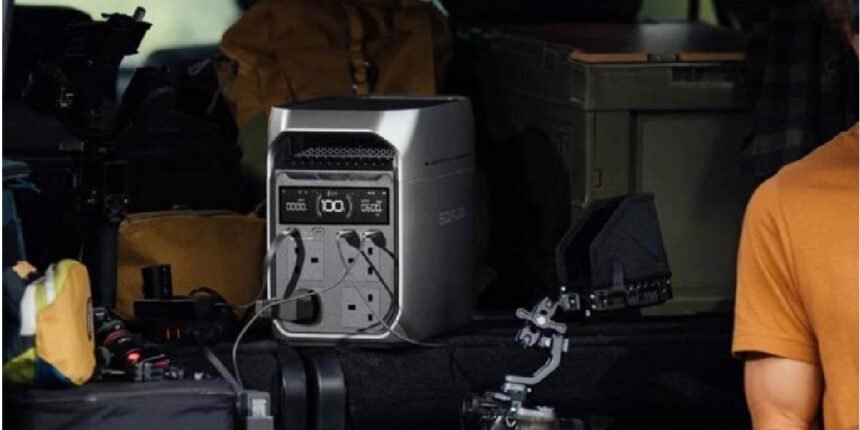Installation Tips for Home Solar Battery Systems
Installing a solar battery system at home can revolutionize your energy consumption, reduce electrical bills, and contribute to a greener planet. However, a successful installation requires careful planning and understanding of essential components and procedures. This guide aims to provide homeowners with crucial insights into setting up solar batteries seamlessly. We will delve into preparation steps, the selection of appropriate battery systems, installation processes, and some common pitfalls to avoid. Whether you’re a DIY enthusiast or considering hiring a professional, understanding these foundational aspects ensures your solar battery installation is efficient and effective, allowing you to harness the sun’s power to its fullest potential.
Preparing Your Home for a Solar Battery System
Check your home’s electrical load capacity
Begin by assessing your home’s electrical load capacity. This step is crucial because it determines how much power your solar battery system can handle without overloading. Calculate your total power consumption and compare it to your main service panel’s capacity. If needed, consult with a certified electrician to ensure your system can safely handle additional loads. Proper evaluation avoids future electrical issues and helps in selecting the right battery size.
Evaluate the available indoor/outdoor space
Next, evaluate the available space for battery installation. Consider environmental factors that may affect performance such as ventilation and temperature control. Indoor installations should be in a cool, dry place, while outdoor setups require weatherproof enclosures. Plan for enough room to accommodate future expansions or maintenance access. Proper space management not only prolongs battery life but also enhances safety and accessibility.
Understand backup needs vs full-load setup
Determine if you want a backup power solution or a full-load setup. A backup system powers essential appliances during outages, offering a cost-effective option. In contrast, a full-load system supports the entire home’s electricity needs, ideal for those seeking full independence from the grid. Clearly defining your requirements ensures the system aligns with your energy consumption goals and budget.
Choosing the Right Solar Battery System
Compare lithium vs lead-acid batteries
Selecting the right battery type is pivotal. Lithium batteries outperform lead-acid batteries in lifespan, efficiency, and energy density. They’re lightweight and require less maintenance, but come at a higher upfront cost. Lead-acid batteries are budget-friendly but need regular upkeep and have shorter life cycles. Evaluate these characteristics to decide which battery suits your energy needs and long-term financial plans.
Match capacity with your energy goals
Once the battery type is chosen, match its capacity to your energy goals. Calculate your daily energy usage and choose a battery size that accommodates those needs comfortably with some buffer for peak demands. Overestimation could lead to unnecessary costs, whereas underestimation might restrict your energy savings. Proper capacity planning maximizes efficiency and cost-effectiveness of your system.
Product highlight: EcoFlow Power Kits for easy installation
EcoFlow Power Kits present an excellent choice for easy home installation. These kits come with user-friendly features and comprehensive instructions, suited for both beginners and professionals. Known for their reliability and high performance, EcoFlow systems streamline the installation process. Their energy management features allow seamless integration with various solar setups, ensuring homeowners get optimal performance with minimal hassle.

Key Steps in the Installation Process
Hire a certified installer or DIY?
Decide whether you’ll hire a certified installer or go the DIY route. Installing a solar battery system involves intricate electrical work. A professional ensures compliance with local regulations and safety standards. However, if you possess electrical expertise and the necessary tools, DIY can be a rewarding challenge. Evaluate your skills, project complexity, and budget before making a decision.
Connect the battery to inverter and solar panels
Connecting the battery to the inverter and solar panels is a pivotal step in the installation. Ensure all connections follow the manufacturer’s guidelines. The battery must first connect to the inverter to allow energy conversion, subsequently linking to solar panels. This setup demands precision, ensuring all components communicate effectively for seamless power transmission and storage.
Testing, commissioning, and safety checks
Perform thorough testing, commissioning, and safety checks post-installation. Verify all connections, make sure the battery charges and discharges correctly, and inspect for any electrical shorts or abnormal temperature rises. Conduct these checks to guarantee the system’s operational safety and efficiency. Regular inspections post-installation further enhance reliability and longevity of your solar battery system.
Common Installation Mistakes to Avoid
Poor ventilation and overloading issues
Neglecting proper ventilation and overloading the system are frequent errors. Ensure storage areas have adequate airflow to prevent overheating. Overloading occurs when the system demands exceed battery capacity, risking damage and efficiency loss. Adhere to manufacturer limits and regularly assess load requirements to protect your investment and maximize lifespan.
Ignoring local permits and grid requirements
Disregard for local permits and grid requirements can lead to legal issues and grid incompatibility. Consult local authorities to understand zoning laws, electrical codes, and permit necessities. Moreover, confirm whether your system requires grid-tied setups or specific configurations to comply with local utility criteria. Proper compliance prevents future complications and secures your transition to solar energy.
Misplacing battery near heat or water sources
Avoid placing batteries near heat or water sources. Extreme temperatures can impair battery performance, while moisture poses a risk of short-circuiting. An optimal location is a cool, dry place away from direct sunlight or humid conditions. Prioritize safety by installing battery enclosures if necessary, and ensure environmental factors don’t compromise your installation.
Conclusion
Installing a solar battery system at home requires careful planning and execution. By following our comprehensive guide, you can avoid common pitfalls, comply with local regulations, and optimize your home’s solar energy use. From selecting suitable batteries to ensuring safety in installation, each step contributes to a successful setup. Whether you’re eyeing independence from the grid or seeking reliable backup power, understanding these elements ensures your solar battery system will serve your household efficiently and sustainably.
For More Information Visit Fourmagazine







